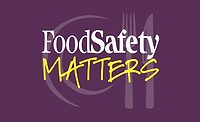President Biden Signs NSM-16 to Strengthen U.S. Food Safety, Security; Highlights Climate Change, Cybersecurity

Credit: Aaron Kittredge (aaron-kittredge-35519) via Pexels
On November 10, 2022, U.S. President Joe Biden signed the National Security Memorandum-16 (NSM-16), which aims to strengthen the security and resilience of the U.S. food supply and agricultural systems. Additionally, according to U.S. Food and Drug Administration (FDA) Deputy Commissioner of Food Policy and Response Frank Yiannas, FDA will be involved in NSM-16 by engaging with federal partners, state and local governments, the private sector, and academia to further strengthen the security and resilience of the U.S. food system.
The White House statement announcing President Biden’s signing of NSM-16 highlights the ways in which the U.S. food and agriculture sector has, in recent years, faced a range of deliberate and naturally occurring threats to its security and resilience. Such threats include:
- A ransomware attack in June 2021 that forced one of the world’s largest meat suppliers to halt North American operations
- The spread of highly pathogenic avian influenza (HPAI) across the U.S. throughout 2022, affecting poultry food safety and supply
- Threats to global food security and grain shortages caused by the Russian war in Ukraine.
Food and agriculture systems and supply chains are designated as critical infrastructure, primarily owned and operated by private sector and non-federal entities, and can be vulnerable to disruption and damage from domestic and global threats. To strengthen the security and resilience of the agrifood system, President Biden approved NSM-16. NSM-16 supersedes the 2004 Homeland Security Presidential Directive 9 (Defense of United States Agriculture and Food, HSPD-9), and provides presidential guidance to:
- Identify and assess the threats of greatest consequence
- Strengthen partnerships to enhance the resilience of the workforce
- Coordinate the U.S. government to act more efficiently and effectively
- Enhance preparedness and response.
Identifying and Assessing Threats of Greatest Consequence
The NSM outlines a process for the federal government to identify and assess threats of greatest consequence to the food and agriculture sector. The process includes redefining the way that chemical, biological, radiological, and nuclear (CBRN) threats are defined in relation to the food and agriculture sector; focusing on cyber threats and the consequences of the climate crisis; enhancing threat and risk assessments, disseminating needed information with relevant federal, state, local, tribal, and territorial (SLTT) governments and private sector partners; and mandating a continuous process to assess and mitigate the risks and vulnerabilities of the food and agriculture sector.
Strengthening Partnerships to Enhance Workforce Resilience
The private sector owns and operates the majority of the food and agriculture sector and, in conjunction with SLTT officials, is generally the first line of response when an incident happens. NSM-16 sets out to strengthen the resilience of the food and agriculture workforce by refining and promoting the identification of, and guidance for, essential critical infrastructure workers in the food and agriculture sector to continue to work safely while supporting ongoing operations during high-consequence or catastrophic incidents. The guidance also supports the development, provision, and promotion of relevant education at all levels to train the existing workforce and build a pipeline of future essential workers.
Government Coordination, Enhanced Preparedness and Response
NSM-16 also positions the federal government to develop, maintain, assess, enhance, and encourage the adoption of systems and activities that will harden U.S. abilities to prepare and respond to an agricultural incident by training federal, SLTT, and private sector partners on how to prepare for and respond to threats to the food and agriculture sector; integrating federal, SLTT, private, and academic laboratories to increase testing and diagnostic surge capacity and standardizing diagnostic and reporting protocols to facilitate timely information-sharing; enhancing the National Veterinary Stockpile; and strengthening U.S. plant disease response capabilities with the National Plant Disease Recovery System.
Looking for a reprint of this article?
From high-res PDFs to custom plaques, order your copy today!






